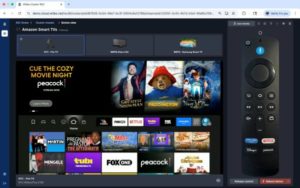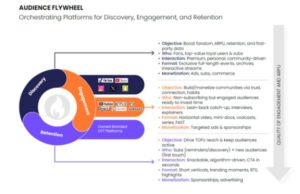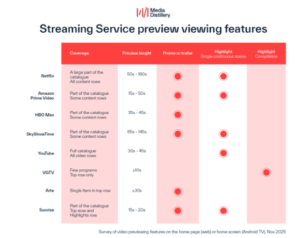Agile Content – How TVaaS empowers telcos and ISPs to seamlessly enter the TV market

André Rosado, Head of Product, Agile Content
In the ever-evolving and highly competitive telecommunications landscape, delivering high-quality TV services has become a critical factor for success. However, for Tier 2 and Tier 3 telcos and Internet Service Providers (ISPs), entering the TV service market presents a daunting challenge. The obstacles are numerous, ranging from limited infrastructure and technical expertise to significant capital investment requirements. Building and maintaining a robust TV platform demands not only substantial financial resources but also continuous content management and the agility to respond to rapidly changing consumer preferences. For many smaller telcos and ISPs, these challenges result in either subpar TV services or an inability to offer these services at all. Studies have consistently shown that households with bundled TV and internet services exhibit significantly higher retention rates compared to those with standalone services. For instance, a recent report by Deloitte revealed that 40% of consumers are more likely to stay with their current provider if they are satisfied with their TV service. This customer retention is crucial for smaller telcos and ISPs operating in a saturated market, where competition is fierce and customer loyalty can be hard to secure. Offering a compelling service can act as a significant differentiator, helping these companies retain customers who might otherwise switch to competitors offering more comprehensive service packages.
However, the Pay-TV market is notably fragmented, especially in regions like Europe, where smaller local players serve specific areas. Europe alone hosts over 200 Pay-TV providers, most of which have fewer than 500,000 subscribers. This modest scale, especially when compared to the vast markets in Asia-Pacific and North America, poses a competitive disadvantage for smaller telcos and ISPs. They often lack the resources to build extensive content libraries, invest in advanced technology, or offer the same level of service as larger providers. This fragmentation makes it even more challenging for these smaller players to compete effectively in the TV service market.
The emergence of TV-as-a-Service
Amid these challenges, the TV-as-a-Service (TVaaS) model has emerged as a powerful solution for companies looking to enter the TV market without the typical associated headaches. The “as-a-Service” approach, which has been a growing trend across various industries, allows telcos and ISPs to focus on their core activities — such as providing broadband and mobile services — while outsourcing the complexities of TV service delivery to specialized providers.
Traditionally, managed services have allowed companies to outsource technical operations and focus on their primary business activities. However, these models often had limitations in scalability and required extensive on-premise integration, demanding significant in-house resources. In contrast, TVaaS offers a more flexible and scalable solution. By moving to a TVaaS platform, telcos and ISPs can outsource all aspects of delivery, including content processing, management, video delivery, and the development of front-end applications. This outsourcing not only reduces the complexity of launching a TV service but also minimizes the risks associated with investing in TV infrastructure and technology.
Customization and modularity in TVaaS

One of the key advantages of TVaaS is its modular nature. Its solutions offer both hard bundles, which encompass essential services needed to operate a TV platform, and soft bundles, which are modular and can be adapted to meet the specific needs of each operator. This approach allows telcos and ISPs to pick and choose the components that best fit their business model and customer base, ensuring a tailored and seamless user experience.
For example, a cloud-based TVaaS platform covers all aspects of TV service delivery, from content processing and management to video delivery and front-end apps. However, operators can select only the necessary components they require for their workflow, making the service both scalable and competitive. This level of customization is particularly beneficial for smaller telcos, who may not have the resources to invest in a full-scale TV platform but can still offer a high-quality, personalized service by selecting the most relevant components.
Moreover, TVaaS aligns with the current trend of bundling and super aggregation, which involves combining content from various streaming services, traditional TV channels, and on-demand platforms into a single, unified interface. This approach enhances the customer experience by providing a seamless, all-in-one entertainment solution, and offers significant operational benefits. Features like single sign-on, unified search capabilities, and simplified payment processes make the service more user-friendly and reduce the friction points that can lead to customer dissatisfaction and churn. By bundling TV services with broadband and mobile plans, telcos can attract more customers, increase Average Revenue Per User (ARPU), and reduce churn. TVaaS not only allows telcos to outsource the delivery of TV services but also externalizes the risks and complexities associated with establishing and maintaining these services. This approach enables smaller telcos to focus on their core strengths while still delivering a high-quality content that meets the demands of today’s consumers.
In essence, TVaaS empowers smaller telcos and ISPs to offer competitive, scalable, and profitable TV services without the need for significant upfront investment or in-house expertise. The TVaaS model effectively levels the playing field, making the future of TV more accessible and manageable than ever before for Tier 2 and Tier 3 telcos. As the telecommunications market continues to evolve, TVaaS represents a viable and attractive option for smaller telcos looking to enter the TV service sector and compete with larger players. By leveraging TVaaS, these telcos can ensure that their TV offerings are not only competitive but also scalable and profitable, positioning themselves for long-term success in the increasingly competitive telecommunications landscape.









